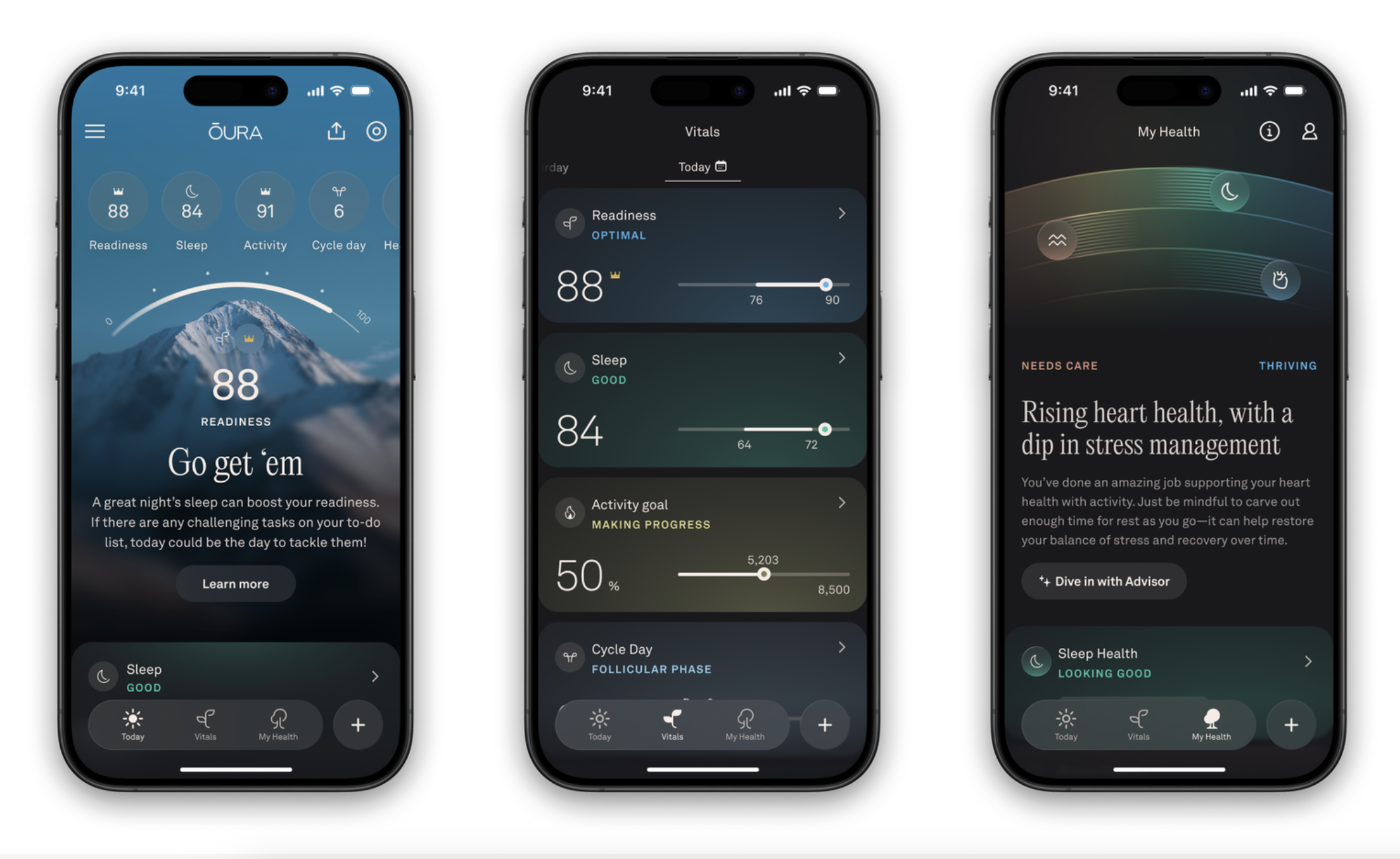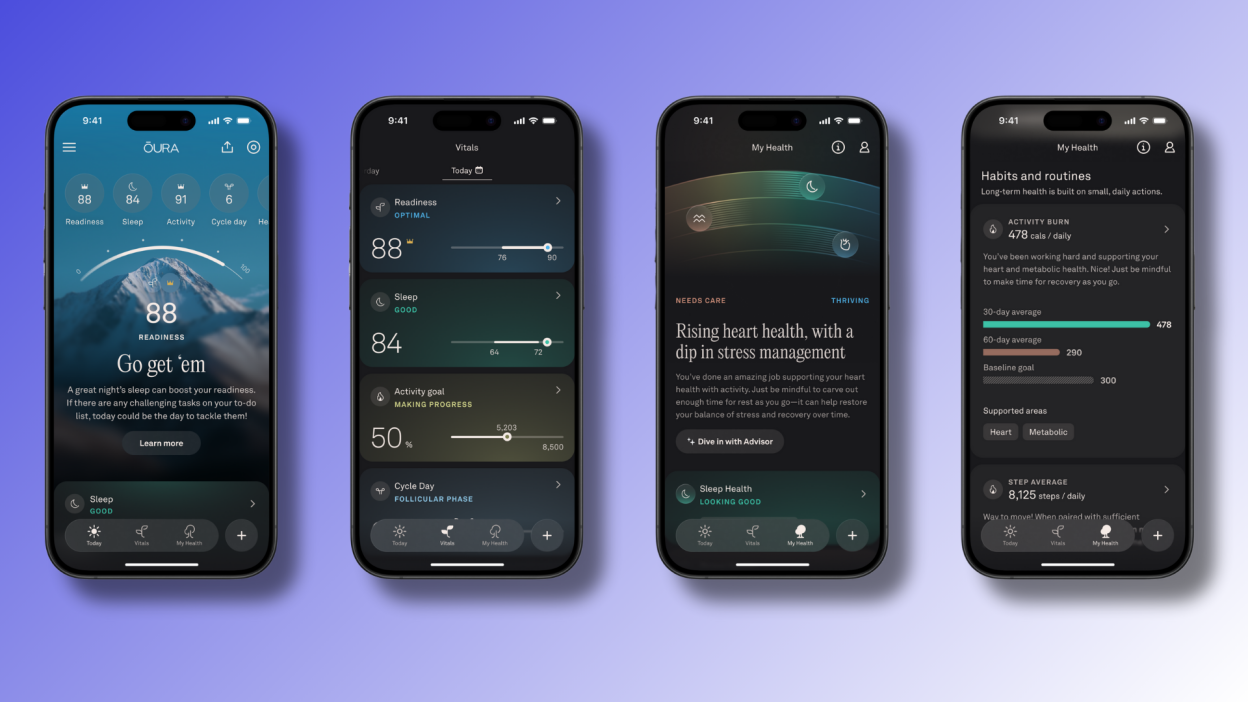Feeling crazed but not sure what’s fueling it?
And now, a feature of the Oura Ring called Cumulative Stress is trying to identify the “why” by weaving together tiny clues that your body has been broadcasting for weeks.

What’s New in Oura’s Stress Tracking Features
Oura’s Cumulative Stress goes beyond fleeting heart rate blips and measures how strain accumulates over time. The company says it validated the metric against other commonly used tools, including the Perceived Stress Scale and the Copenhagen Burnout Inventory, both of which are widely used in psychology and occupational health. Will those steps taken or minutes exercised really show that you’ve had a healthy day? Rather than a basic stress graph looking at every single day, you’re presented with a 30-day view that’s tied to physiology and behavior.
The feature comes with a Stress Management view that lets you track your daily patterns and long-term progress, and an updated Today tab that surfaces “One Big Thing,” putting the most contextual recovery or activity insight front and center when you open the app.
How Cumulative Stress Works Across Your Daily Life
To calculate this, Oura combines five inputs: sleep continuity, heart rate response, sleep micromovements, temperature regulation, and the effects of activity. Together, they paint a picture of allostatic load — the damage that occurs to body systems when stress outstrips recovery.
Here’s the gist. If you get your shut-eye broken up, if nighttime body temperature ticks up just a bit, if total stress goes on and few breaks are taken during the waking hours — boom, that’s escalating strain. These differences might be subtle, so one or two weeks with late nights or lots of travel won’t crater your score for the day but do move the curve up a little bit.
This differs from the daytime stress feature of Oura, which is largely an acute read on heart rate and nervous system arousal. Cumulative Stress is centered on trend lines and compounding load — what many of us know as creeping fatigue that finally tumbles past the edge into burnout.
Why This Matters for Burnout and Long-Term Well-Being
Burnout rarely appears overnight. The World Health Organization defines it as a syndrome derived from chronic workplace stress, with symptoms of exhaustion, cynicism, and reduced efficacy. A study in Frontiers in Neuroscience found that reduced heart rate variability is associated with long-term work-related stress, and sleep disruption is a widely documented fatigue and mood change accelerator.
And population statistics highlight just how badly warning lights are needed earlier in life. The American Psychological Association has found chronically high levels of stress among adults in polls, with many saying the physical and sleep symptoms have been difficult to bear. By linking sleep continuity, physiological responses, and behavioral patterns, Cumulative Stress can provide an early indication of the trickle-down costs.

Translating the Insights into Daily Life
Think of Cumulative Stress as a load management dashboard. If your 30-day trend is upward, the app might point out actions to prioritize recovery — perhaps winding down earlier, training less that day, or taking a moment after back-to-back meetings. The Today tab’s “One Big Thing” nudges you to adopt a single, time-sensitive recommendation that you’re more likely to take action on — say, maintaining a steady bedtime after a string of late nights.
Example: A work trip produces short, fitful nights’ sleep and above-normal temperatures each night. At best, your middle-of-the-night heart rate may have returned to a normal level by the time you return home, in which case Cumulative Stress still will show the residue. A few days of lower-intensity activity, exposure to daylight during the day, and a regular sleep-wake schedule can help bring that curve back down.
What It Can and Cannot Tell You About Your Stress
Cumulative Stress is a biological approximation of ongoing strain; it is not anything that can be diagnosed in a physician’s office. The fact that the signal can be validated against, for one, the Perceived Stress Scale and the Copenhagen Burnout Inventory gives us confidence that it is mapping to real-world experience, though context still counts — as situations in life change, job demands alter, and so too will stress levels; whether you’re caregiving or living with a mental health condition will play a role in how stress feels and how long it hangs around.
Employ the trend as a conversation starter with yourself, a coach, or a clinician.
If the curve remains high despite better sleep and a lighter workload, then there may need to be some screening for conditions such as anxiety, depression, or overtraining. Employers and teams might also use shifts in the signal to indicate that workloads or recovery windows need to change.
The Larger Wearable Science Picture and Implications
Wearables have evolved from step counters to longitudinal health tools. Research published in journals including Nature Medicine indicates that round-the-clock biometric monitoring is able to alert to deviations associated with illness or increased stress days beforehand. In the shift to measure long-horizon stress, Oura’s move is to distill readings of autonomic dysregulation and sleep into a single, trackable load signal.
Burnout flourishes on the gray-area border between “fine” and being “fragile.” By shining a light on that gray area, Cumulative Stress offers users an opportunity to course-correct sooner — before the damage from exhaustion, cynicism, and performance declines has gone from being temporary to the new normal.

